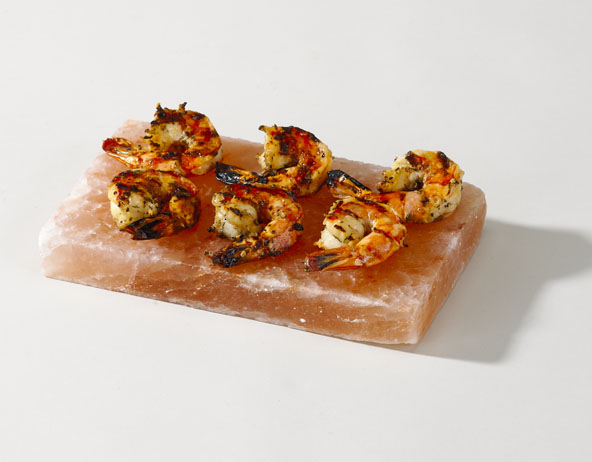When you cook on Himalayan Salt Blocks, several things are happening at the same time: the heat of the block sears and browns proteins, melts fats, and caramelizes sugars, while the salt subtly dehydrates the surface and seasons the food. Together the heat and salt work in wonderful harmony, producing unique salty-toasty-caramelized flavors and delicately crisped surfaces as thin as a single layer of glaze on porcelain.
When food is cooked on Himalayan Salt Blocks, moisture from the food dissolves the salt in the block, which can then transmit too much salt to whatever you are cooking. For that reason, it is important to get the block hot enough that it immediately evaporates any moisture coming from an ingredient.
The presence of addition of fat is another consideration. Salt isn’t fat soluble, so if you cook a very fatty food (such as duck breast) on salt, or put oil on the block while cooking a food that is moist but not fatty (such as summer squash), there will be less interaction between the salt and the food.
Perhaps the most challenging part of cooking on Himalayan Salt Blocks is heating them. As far as cooking surfaces go, salt is relatively soft. As it heats, it will naturally develop cracks and crevices. Over time, these will grow until eventually flaws in the block breaks. Just how long a salt block will last depends on the natural flows in the block, how evenly you heat it, what you cook on it, and how carefully you clean it. The basic rule is: the slower you heat it, the longer it will last. Preheat the block slowly at the very low heat for fifteen minutes, then allow at least 30 minutes to heat you salt block at medium to high heat to the desired cooking temperature.
An un-oiled salt block gives very few visual clues as to its temperature, though it will tend to whiten a little as it nears 500
oF or so. However, as with any pan, you can tell the approximate heat by holding your hand about three inches away. If the heat feels uncomfortably intense, the block is ready. If it just feels nice and warm, it’s not hot enough. No matter how tempting, do not touch a salt block that’s heating or cooling. Wait until you know the block is at or near room temperature.
We have this available on https://himalayansaltusa.com/salt-plank